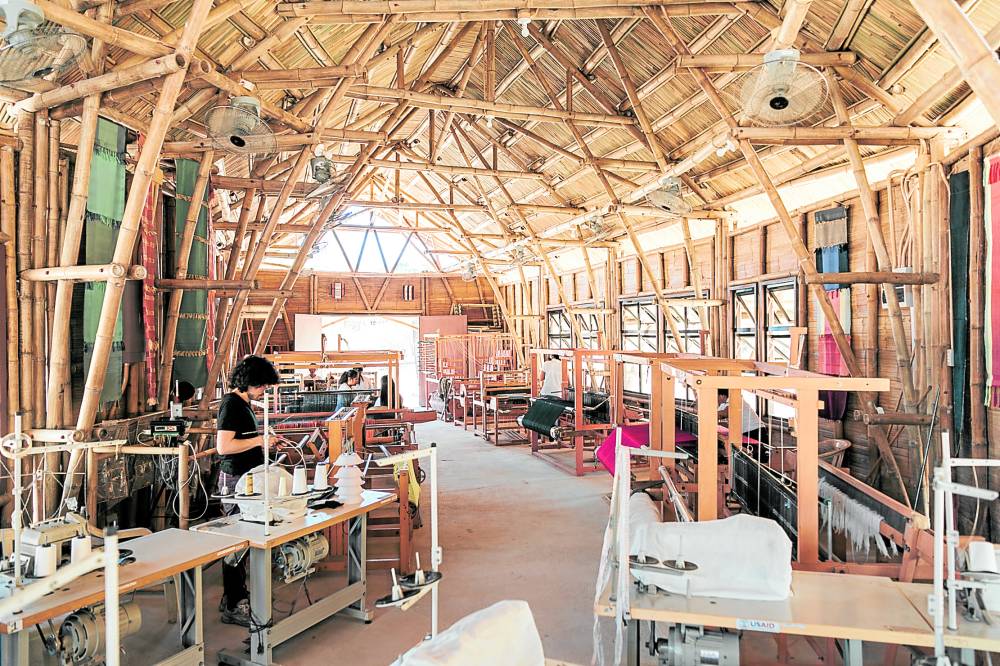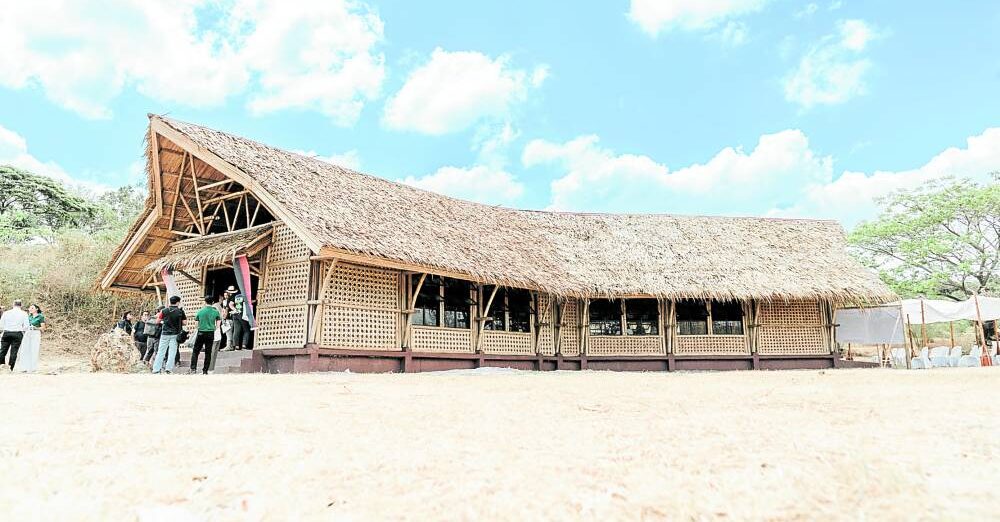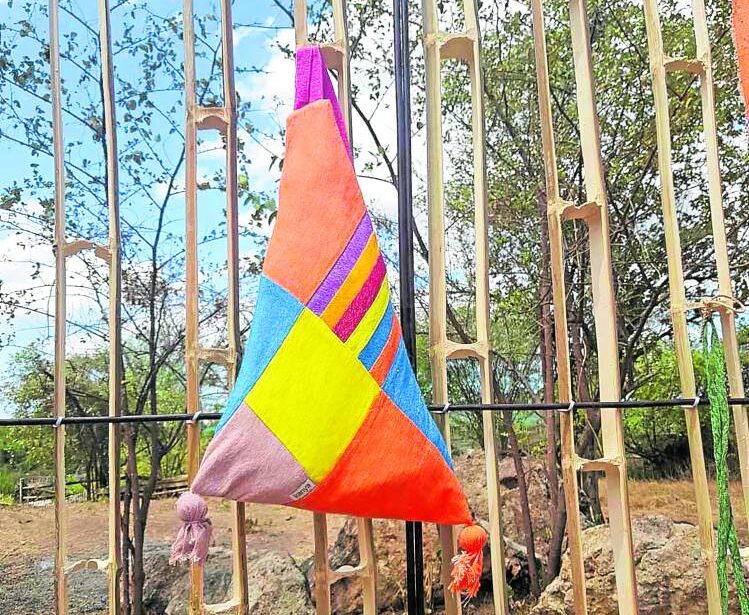Building new livelihood out of sugarcane waste

ARTISANS Housewives are happy to augment their family income by weaving bagasse into a natural fabric for bags, placemats and other functional items. —Contributed photos
A hilly barangay in Nasugbu, Batangas, is a showcase of how ingenuity, creativity, innovation—along with a willingness and readiness to look beyond the obvious and the usual—can lead to ideas that promote sustainability.
Base Bahay Foundation, Holcim Philippines and Kanya Kawayan recently inaugurated Kanya Kawayan Weaving Center, a 148-square meter sustainably-built structure where artisanal creations will be produced to help generate jobs and alternative livelihood opportunities for Batangueños, particularly women.
A brainchild of philanthropist Bea Roxas, whose family is in the sugar production business, Kanya Kawayan is a trailblazing initiative that transforms bagasse, what remains of the sugarcane after the juice had been extracted, into an eco-friendly, natural woven fabric for use in various products. Kanya is both the Filipinized version of the Spanish caña for cane as well as the Filipino word for his or hers.
Until Roxas discovered other possibilities for bagasse, waste product from sugar milling was only used as fuel or thrown away.
“I grew up surrounded by sugarcane,” Roxas says during the inauguration. “I thought we should be using sugarcane for other purposes.” Finding new uses for bagasse would not only reduce trash but could also create jobs, particularly for women who only did unpaid house work.
Roxas says, “The very essence of Kanya is interwoven with a commitment to be of service to the economic development of rural communities in the province of Batangas.”
With help from her friend Jean Goulbourn, a popular fashion designer who uses mainly the native piña (pineapple fiber) in her clothes and accessories, and expert assistance from technical people, Roxas found the technology to turn bagasse into fiber that could be used as material for bags, home accessories, etc.
Thoughtful creation
In keeping with its commitment to sustainability, Kanya products use only organic dyes.
Roxas herself designs the woven products, like bags and placemats that are now carried by the high-end Rustans Department Store, among others.
With its focus on eco-friendly products, Kanya needed a workplace built with as much care and concern for the environment.
The Kanya Kawayan Weaving Center—a curved structure designed not only to blend with its environment but also anticipate how the elements would affect it—was built using the cement bamboo frame technology of Base Bahay Foundation Inc. It features bent bamboo poles that give the structure its curves.
Base Bahay general manager Pablo Jorillo says the technology could be used to build more schools and low-cost housing.
Werner Wallner, chief executive officer of the Hilti Foundation, which founded and funds Base Bahay, stresses the organization’s commitment to invest in building technology “that’s safe, durable and sustainable.”
Eco-friendly cement
The bamboo frames are fortified by Holcim’s ECOPlanet cement, which has 30 percent less carbon footprint compared with ordinary cement.
Eliana Nieto, chief financial officer of Holcim Philippines, says the company is not only happy that its eco-friendly cement is used in the project but also that the weaving center would be helping women— “empowering them and making their lives better.”
Luis Lopez, an engineer and head of technology at Base Bahay, says the Kanya structure was shaped like a boomerang to follow the contour of the site and blend with the environment. This was also to allow maximum air flow so there would be no need for air conditioning.
Base Bahay has also used its cement bamboo frame technology to build a children’s village and low-cost houses for 4P (For People), a charitable organization founded by Ingar Akerlund, about a kilometer or so from the weaving center.
Holcim Philippines chief sustainability officer Zoe Sibala says their participation in the Kanya project “weaves two key pillars of our sustainability commitment as it uses green products such as our Holcim ECOPlanet (cement) and increases access to better economic opportunities.”
The weaving center, Base Bahay president Maricen Jalandoni says, would allow people to learn new skills to support themselves.
Eileen Ermita Buhain, wife of Rep. Eric Buhain of the first district of Batangas, is hopeful that the Nasugbu initiative could be replicated in other parts of Batangas and that more women would be encouraged to participate. INQ


